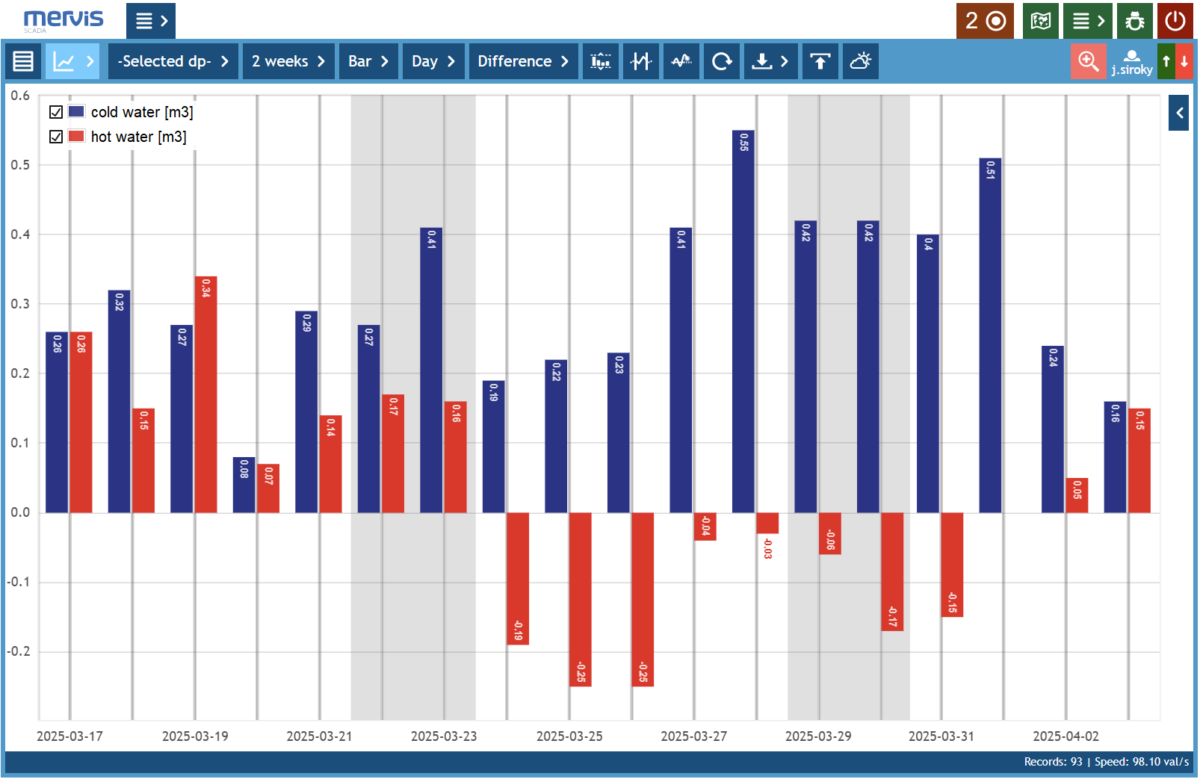It’s always good practice to double-check your input data before diving into analysis. Sometimes you’ll catch small inconsistencies — and sometimes, you’ll uncover something more curious.
In the anonymized chart below, something didn’t quite add up — literally. At first glance, we see a standard consumption profile. But then, suddenly, the hot water flow drops into negative values. Suspicious already — but when you look closer, the negative hot water flow has the exact same amplitude as the cold water consumption. Coincidence? Unlikely.

As it turns out, this wasn’t a bug, but a shady workaround: by blending some hot into the cold line, someone was quietly lowering their hot water bill. After all, hot water tends to cost more — and if the cold water meter doesn’t mind going a bit into the negatives, why not?
Apparently, the data didn’t. The takeaway? Always check your inputs — not just for errors, but for creative interpretations of how things should work. Sometimes, the data doesn’t just show inefficiencies — it reveals cheeky tricks hiding in plain sight.
And in this case? The little discovery led to a practical outcome: plans to install check valves (non-return) so that future “reverse savings” won’t be an option.



